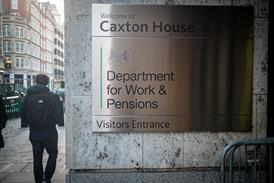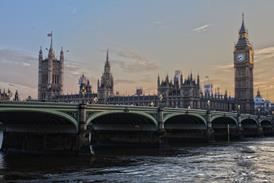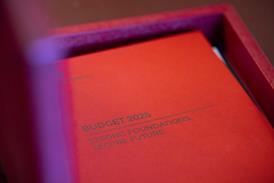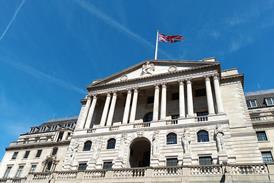The government is misleading parliament and the public over the cost to the taxpayer of public sector pensions, a report from the Institute of Economic Affairs has claimed, while raising further questions around the visibility of these pension schemes.
The report published on Tuesday, ‘The Great British rake-off’, stated that the government is reporting its pension costs in a different way from that required by pension regulations in the private sector, resulting in an unreported cost of £57bn.
But one expert said that some of the concerns raised in the report are “pretty standard” within the pensions industry.
According to the report, two different methods are used to calculate pension costs, resulting in the cost disparity.
It is vital that the government uses internationally agreed standards to report these pensions’ costs
Neil Record, Institute of Economic Affairs
A discretionary cost method of calculation is used to determine what public sector employers and employees pay each year for their pensions and is the “generally understood” cost.
The official cost method is based on IAS19 — the measure approved by the International Accounting Standards Board — which is the one UK regulation requires for private sector pensions.
According to the report, to conform with UK pensions law, public sector pensions should be accounted for at the official cost. This would also provide comparability with private sector pensions.
However, the report claimed that the public and its workers are only told the discretionary cost. The government does declare the official cost method, as is expected under regulations, but only deep in its pensions accounts.
As a result, the “situation is understandable only by experts”, the report stated, with an estimated underreported annual cost of £57bn in 2020-21, or approximately 30 per cent of the public sector payroll.
Sensitivity to discount rate
Compounding this is the role of separate interest rates within the pension cost calculations.
The government’s actuarial calculation, the Superannuation Contributions Adjusted for Past Experience, is used to calculate how much an additional year of a defined benefit pension promise costs.
However, Scape is susceptible to the interest rate that is applied to the ‘invested’ contributions, with higher interest rates resulting in lower pension costs.
In June this year, the government proposed aligning the discount rate review periods with the valuation cycles of public service pension schemes.
But the report stated that all the major public sector schemes are unfunded, and therefore have no investments for the Scape principles to be conducted with real money.
“In practice, the entity that exercises control over the interest rate used in Scape is the entity that controls the reported ‘cost’ of public sector pensions. This control extends not just to what the employers, employees and the public are told is the cost of the pensions, but also to calculating the size of the contributions that the Treasury receives in return for agreeing to pay the pensions as they fall due,” the report stated.
However, in 2005-06, the government introduced a new interest rate to the Scape calculation, but began producing two sets of separate accounts. One calculated using the Scape methodology, and another using the IAS19 interest rate.
But instead of also calculating the pension contributions based on IAS19, the government continued to calculate the pension contributions based on its discretionary rate, resulting in a gap opening “between the international standards’ pensions cost and what the Treasury said it was”.
The use of this lower interest rate raised the ‘current service cost’, but the pension contributions did not change.
The report’s author, Neil Record, IEA’s chair, said that there is “no logical reason to calculate the current service cost using one interest rate and the pension contributions using another”.
The difference between the discretionary and official costs is “huge”, he said. By way of example, for the NHS Pension Fund, in 2020-21 the discretionary pension cost as a percentage of salary was 30.4 per cent, while the official cost was 62.2 per cent.
Record noted that “it is vital that the government uses internationally agreed standards to report these pensions’ costs”.
“It does not do so, pretending to the electorate and to parliament that their pensions are worth about half their true value. The government is marking its own homework, and claiming that wrong answers are correct. This is morally and financially wrong, and must stop,” he said.
The Treasury has been approached for comment.
Business as usual?
But the issues raised in the report touch on several elements that the pensions industry is accustomed to, said Douglas Green, partner at Hymans Robertson.
He said that the practice of “running two books” is something that most employers with DB pension schemes “have to do”.
Green added that there are two ways of assessing the “cost of the benefit promises you’re making to people”.
“One is for your accounts,” and that is the references to IAS19 that the author makes in the report. “That is purely accounting and what goes through your account so it’s purely on paper,” Green noted.
The other, funding, “is what drives the actual cash contributions that are charged for the pension”, and it is “pretty standard” that those figures are different from the previous, he added.
Public sector schemes told to conclude 2016 valuations
The Government Actuary’s Department has agreed with HM Treasury that its amendments to the cost-control framework used in public sector schemes meet the government’s policy objectives, drawing a line under the troubled 2016 valuation process and allowing public sector schemes to complete these.
“[Record] says in the middle of the report [that] there’s no logical reason to calculate, in effect, the accounting figure using one interest rate and the cash figure on another,” Green said.
“You could argue about the logical reason, but that is standard practice throughout the whole of the private as well as the public sector. Numbers that go through the accounts are very different from the actual cash contributions.”
Green said that he “disagrees” with the suggestion that costs are being understated in terms of the contributions that are charged, adding that it is a “matter of opinion”, but it is understandable “given the lack of clarity that often exists around the cost of public sector pensions”.






















